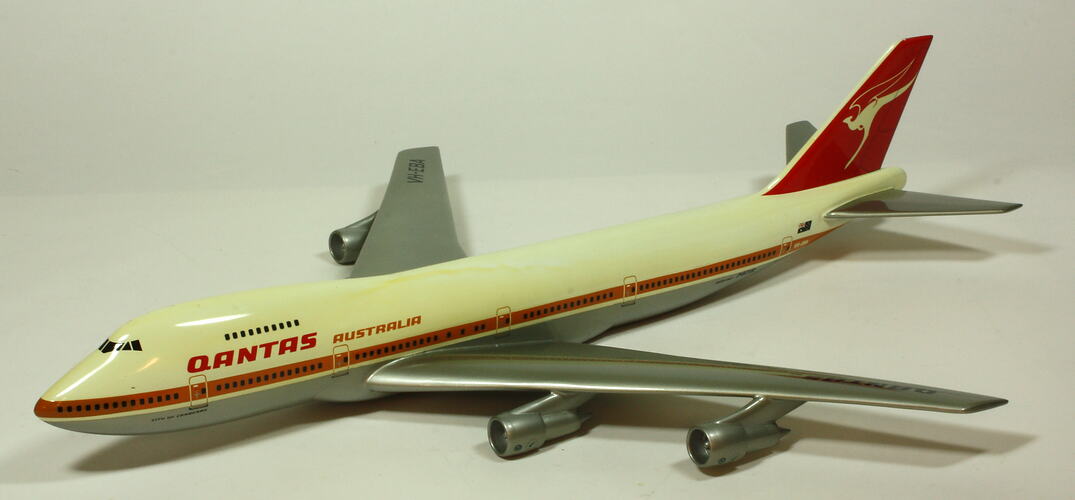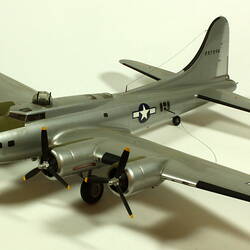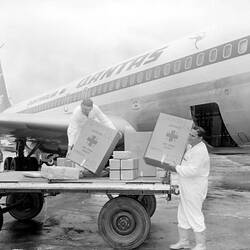No other aircraft has been as important as the Boeing 747 in making international air travel both possible and affordable. The 747 is the most successful wide-bodied passenger jet and has been continuously in production since 1966. The design originated in a United States Air Force (USAF) requirement for a long-range, heavy-lift transport aircraft. Boeing's CX-HLS was not selected but the potential for a passenger version was seen by the CEO of Pan American World Airways, Juan Trippe who ordered 25 such aircraft in April 1966.
The first 747 was flown from Seattle on 30 September 1968. By this time there were orders from 26 other airlines amounting to some 200 aircraft. With a capacity of around 500 passengers, the capacity and operating costs of the 747 on long-haul routes were better than any other aircraft then in service. Qantas was an early customer and operated its first 747-238B service in 1971. Between 1979 and 1985 Qantas operated an all-747 fleet of aircraft. Popularly known as the 'jumbo jet', the 747 has been developed into a variety of special purpose configurations including the USAF E-4A and E-4B airborne command posts used by the US President during a state of emergency.
The current 747-400 series has proven popular and an improved 747-8 is now also in production, mostly as a cargo aircraft. The introduction of the Airbus A380 will provide the first real wide-bodied competition for the 747 but the Boeing design appears to be capable of development for some time yet which will make it one of only a few aircraft to be in production for more than 50 years.
More Information
-
Keywords
-
Localities
-
Authors
-
Article types



